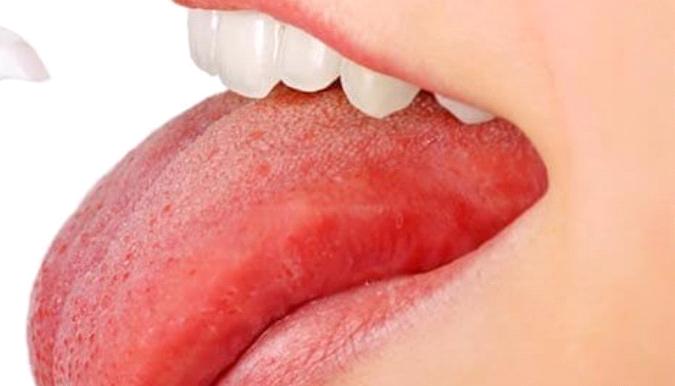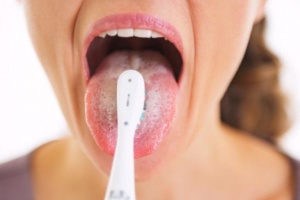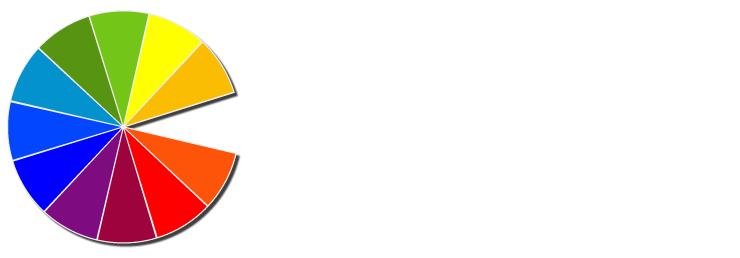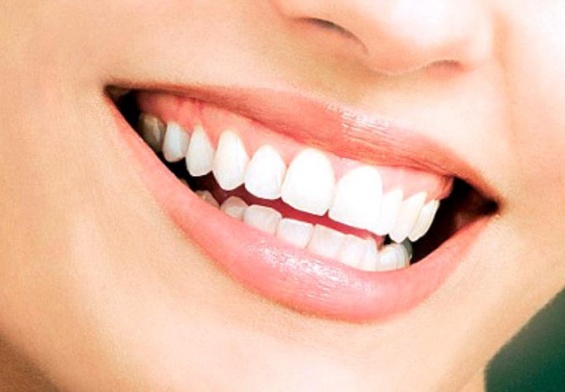
If you see a dentist or dental hygienist on a routine basis, they no doubt give you an oral cancer check. This is commonplace now since over 40,000 Americans are diagnosed with oral and throat cancers yearly. Sadly, the five-year survival rate of those diagnosed is only slightly more than 64 percent. By being proactive, you and your dentist can detect cancer and treat it so that major health problems are alleviated later. So thank your dentist next time when the oral cancer test is complete as he or she might just save your life!
One of the items in the checklist for oral cancer is the health of your tongue. Your dentist does more than just tell you to say “ahhh” and stick out your tongue. He or she will take a piece of gauze to raise the tongue and look underneath and on each side to check for abnormalities. In fact, a dentist can tell a lot about your health by looking at your tongue. For example, a persistent lump or sore on your tongue that doesn’t go away within two weeks could signal oral cancer is present. Note that pain need not be present either – often oral cancer in its early stages has no pain involved.
Color of your tongue
The color of your tongue is a good indication of your oral health. For example, a healthy tongue should be pink and covered with small nodules (papillae). If there is discoloration of any type or deviation from your tongue’s normal appearance, this may be cause for concern. Avoid eating fruits such as black grapes or dark berries because they can deposit an unwanted color onto your tongue. Drink a lot of water because dehydration can sometimes change the color of the tongue.
- White spots or a white coating on the tongue might indicate oral thrush, a yeast infection that occurs inside the mouth. This malady occurs in the elderly, especially denture wearers, or in people with a weakened immune system, such as those who suffer with COPD and must take antibiotics or use an inhaler. White spots are also a condition of leukoplakia which develops when the tongue has been irritated, like by smoking. It may be a precursor to cancer. When you have a high fever, a white layer often forms on the top of the tongue. If it is not readily removed by routine hygiene, it is a fungal infection.
- A red tongue may signal a folic acid or Vitamin B-12 deficiency. If your tongue has a red and bumpy appearance like a strawberry, and you have a high fever, you may have scarlet fever. Additionally, a tongue that is strawberry-like in appearance and accompanied by a fever may be Kawasaki disease, a serious condition for children under the age of five.
Daily dental hygiene routine

You brush and floss your teeth daily, sometimes twice daily if you follow your dentist’s recommendations, so, taking care of your tongue is equally important to have a clean mouth. When you brush your teeth, you should also brush your tongue. Afterward, check carefully for any discoloration, lumps or sores, and, if they are present, or you are in pain, see a dentist if it doesn’t go away in two weeks.
Follow daily guidelines
- Use a toothbrush designed for cleaning the tongue, or, alternately, you may use a tongue-cleaner or scraper, both which are dental implements created specifically for cleaning the tongue.
- Use a gentle pressure in a downward motion several times.
- Apply a light layer of toothpaste to coat your tongue before scraping or brushing as it helps neutralize the bacteria on the tongue and remove them easily.
- Rinse thoroughly with water after brushing or scraping.
- Do not use mouthwash directly after scraping, but do periodically use mouthwash to remove odor-causing bacteria in the mouth, specifically the tongue.
- The use of alcohol-based mouthwash on a daily basis is discouraged as the mouth dries out too much.
- You can also rinse your mouth with saline water (warm water with a half teaspoon of sale) to keep your mouth clean and bacteria free.
A clean mouth is a happy mouth and if you practice these dental hygiene tips on your tongue you will get an “A” every time you visit your dentist.



